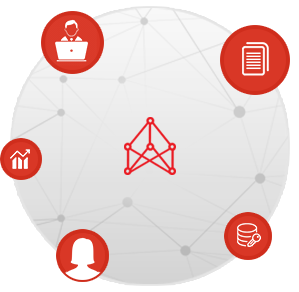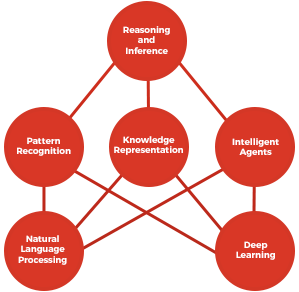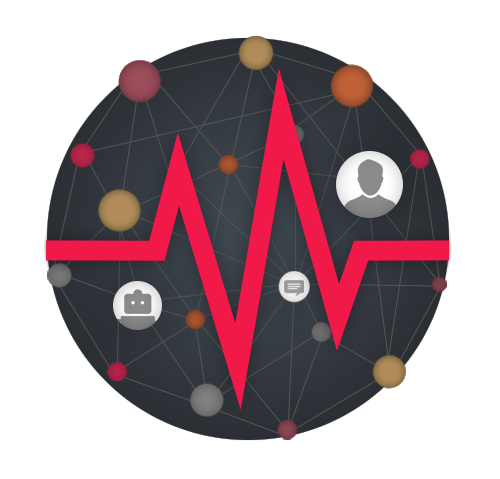
Simplify Your Data and Knowledge
GraphBase is a Graph Database Management System (Graph DBMS) engineered to simplify the creation and maintenance of complex data graphs.
Complex and highly-connected structures are a challenge for the Relational Database Management System (RDBMS). A graph database provides much better modelling utility, performance and scalability.
The current crop of graph database products - the triplestores and property graphs - have been around for nearly two decades. They're powerful tools, they have many uses, but they're still not suited to the management of complex data structures.
With GraphBase, our goal was to simplify the management of complex data structures, so that your data could become something more. It could become Knowledge.
We achieved this by redefining how graph data should be managed. In GraphBase, the graph is a first-class citizen. You get a graph equivalent of the "rows and tables" paradigm that makes a Relational Database so easy to use. The graph is a transactional unit. Large or small whole graphs can be cut, combined and manipulated in many ways.
It's a powerful and liberating way to work with data and it gives you power to create applications and solve problens in ways that aren't possible with any other data store.

Broad AI Support
What is Artificial Intelligence (AI)? We create AI when we give a machine the capacity to turn data, observations and communication into knowledge - and then use that knowledge to perform useful tasks. Like a human does.
Machine learning is getting plenty of press, particularly Generative AI and the Large Language Models (LLMs) that enable it. GraphBase knowledge graphs can be used to provide external context and content for these models. They can then perform tasks using data they weren't trained on. These graphs can also help the model to reduce bias and hallucination, provide explainability and to secure your sensitive knowledge.
Machine learning is getting plenty of press, but there's much more to AI than Neural Networks and other forms of Machine Learning. Central to any AI effort is the need to represent, manage and use knowledge.
GraphBase was built principally to support the management and storage of knowledge. Its primitives, its query objects and its indexing strategies were designed to support Knowledge Representation and Natural Language Understanding.
GraphBase also stores the “how to” - what in humans we call “procedural memory”. Procedural Java “agents” can reside in-graph and are aware of their context, and GraphBase can also encapsulate, feed, run and provide insight into pre-trained “black box” Deep Neural Networks (DNNs).

Engineered for Knowledge Graphs
Built primarily for managing knowledge, GraphBase is the only DBMS that gives you tools to work with discrete self-contained knowledge graphs.
A Knowledge Graph is a KMS (Knowledge Management System) that represents knowledge in a form that both a human and a machine can understand. It's a place where knowledge can be described using simple "atomic" concepts and a place where those concepts can be used to make sense of complex data interrelationships.
GraphBase is the data store for the FactNexus EKG knowledge graph platform. EKG uses an English language upper ontology as the framework for knowledge concepts and facts. These structures allow a knowledge graph to be built, maintained and queried using conversational English.
Tools for Data and Knowledge Integration
Extract concepts and facts from your structured and unstructured information:

Tools Designed for Graphs
A graph is a powerful way to represent data. But by the time you've broken your data problem up into all of its "connected" pieces, it can be difficult to keep an understanding of those pieces in your head.
An RDBMS gives you rows, columns and tables. A Document store gives you... documents. With first-generation Graph Databases you get to make hugely-complex structures - but you're forced to think about and work with your data at the individual vertex level.
GraphBase gives you the tools to think about and work with whole data graphs. Visual tools that let you drag and drop to create and execute queries against local and remote graphs. APIs that greatly simplify the creation of graph-based applications.
It's a simple, elegant and productive way to manage graph data.

Versatile Graph Structures
There is no consensus as to what the ideal graph structure is for storing data. It depends on the nature of the data and the purposes for which it's used. Triplestore, Property Graph, HyperGraph... they all have their strengths and their problems.
Your ideal structure may contain features of all of these graph types, and more besides. With GraphBase you can configure light-weight primitives to give you the structure you need.
GraphBase also lets you configure how your graph is indexed - including support for word vectors/embeddings andsubsumption. Take a look at the FactNexus EKG knowledge graph framework to get a sense for how this works.
GraphBase lets you store objects directly within vertices. These objects can be made first-class citizens within GraphBase, and "Agent" mechanisms allow their logic to be distributed amongst GraphBase server Nodes.
You can also embed simple high-performance data structures within graph vertices to handle high volume real-time and "big data" problems.
Versatile Transaction Control and Security
Agility Edition enforces full transaction (ACID) semantics. These, however, can create significant performance issues - particularly across a distributed data store. That's why most new NoSQL database products don't support them.
The GraphBase Security Framework allows you to specify which parts of your GraphBase graph need locks, rollback and other transactional support - and which parts don't. Get ACID where it matters, Eventual Consistency where it doesn't - and the best possible performance at all times.
The Security Framework also gives you fine-grained control over who can see and modify which parts of your GraphBase graph.

Architecture for Modern Hardware
GraphBase is engineered for modern multiprocessor servers and is designed to take maximum advantage of big RAM and high-speed storage.
A single low-cost 1RU GraphBase server can handle billions of queries and updates per day against a graph of two billion vertices and 200 billion arcs. That's FaceBook on a single pizza box.
The secret to this performance is sophisticated thread management, and compact structures that allow as much of the graph as possible to remain in memory. GraphBase also carries a host of unique innovations. Arc heuristics, for example, enable graph traversals and query speed 10 to 100 times faster than other Graph Database implimentations.

Designed for Cloud
Partitioning or "sharding" graph data is a difficult problem. But sometimes it's not possible to keep your entire graph on one server. At other times it makes sense to distribute your graph so that processing can also be distributed.
GraphBase is designed to be distributed in true "Cloud" fashion. No additionl orchestration is required. Each server "Node" is autonomous, but aware of it's obligations to it's peers. Communication between nodes is asynchronous, and sophisticated cacheing and queueing strategies allow a group of GraphBase Nodes to accommodate the latency and bandwidth issues of a geographically-distributed cloud.
A true Graph Database keeps its arcs close - a strategy referred-to as index-free-adjacency. Unlike some competing products, GraphBase arcs are encapsulated within each vertex and go wherever that vertex goes. It's an architecture that greatly simplifies data distribution.

Big Data Embedding
Graphs are great for simplifying and managing complex data structures, but they're the wrong tool for handling the high-volume kludge of classic "big data" problems.
GraphBase solves this problem by letting you embed simple, compressed, highly-efficent, vertex-focused data stores. Think "all the phonecalls or transactions for a person". It's strategy so effective that it permits a level of real-time big data analysis that's difficult - and expensive - to achieve with any other technology.

GraphBase Enterprise Cloud is the ultimate tool for complex data problems. Use it for...

Enterprise Cloud gives you features that you won't find in other NoSQL and Graph Databases...

Enterprise Cloud gives you under-the-hood access to GraphBase. With it you can tune...